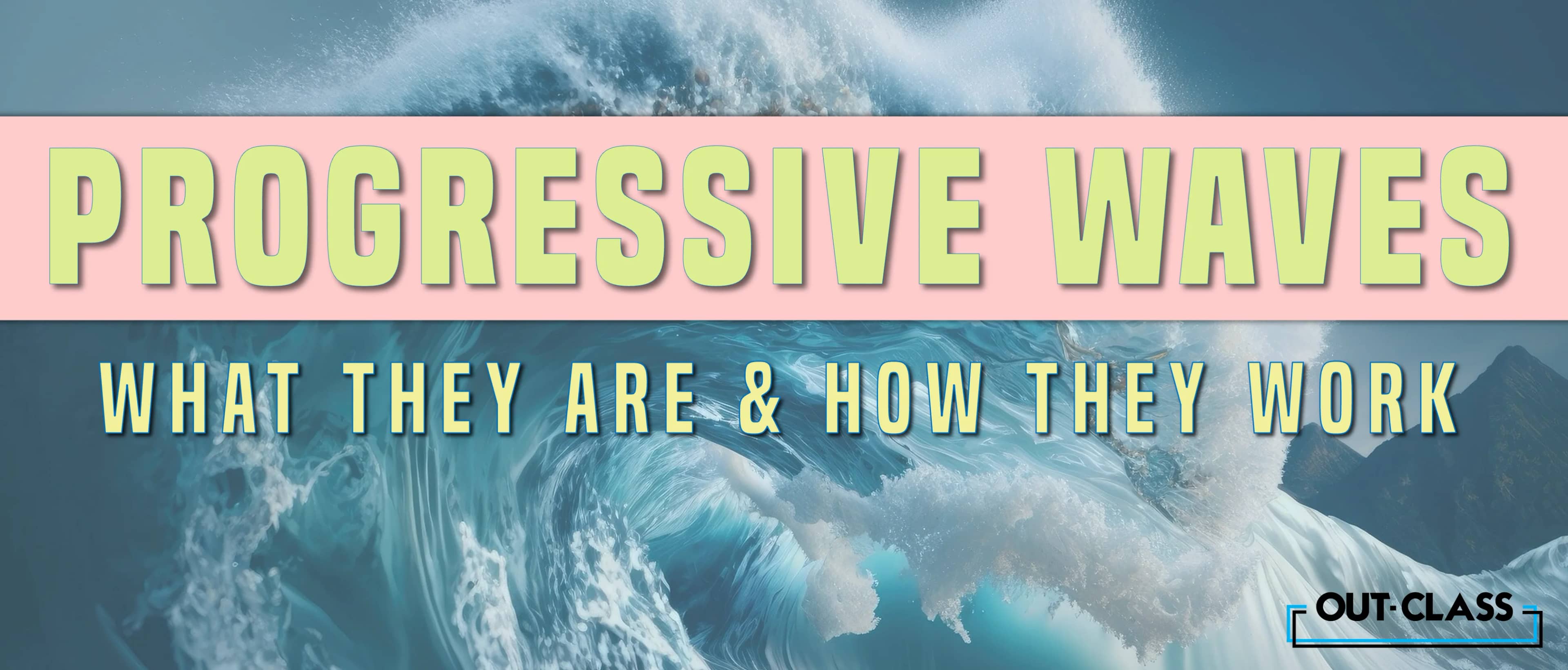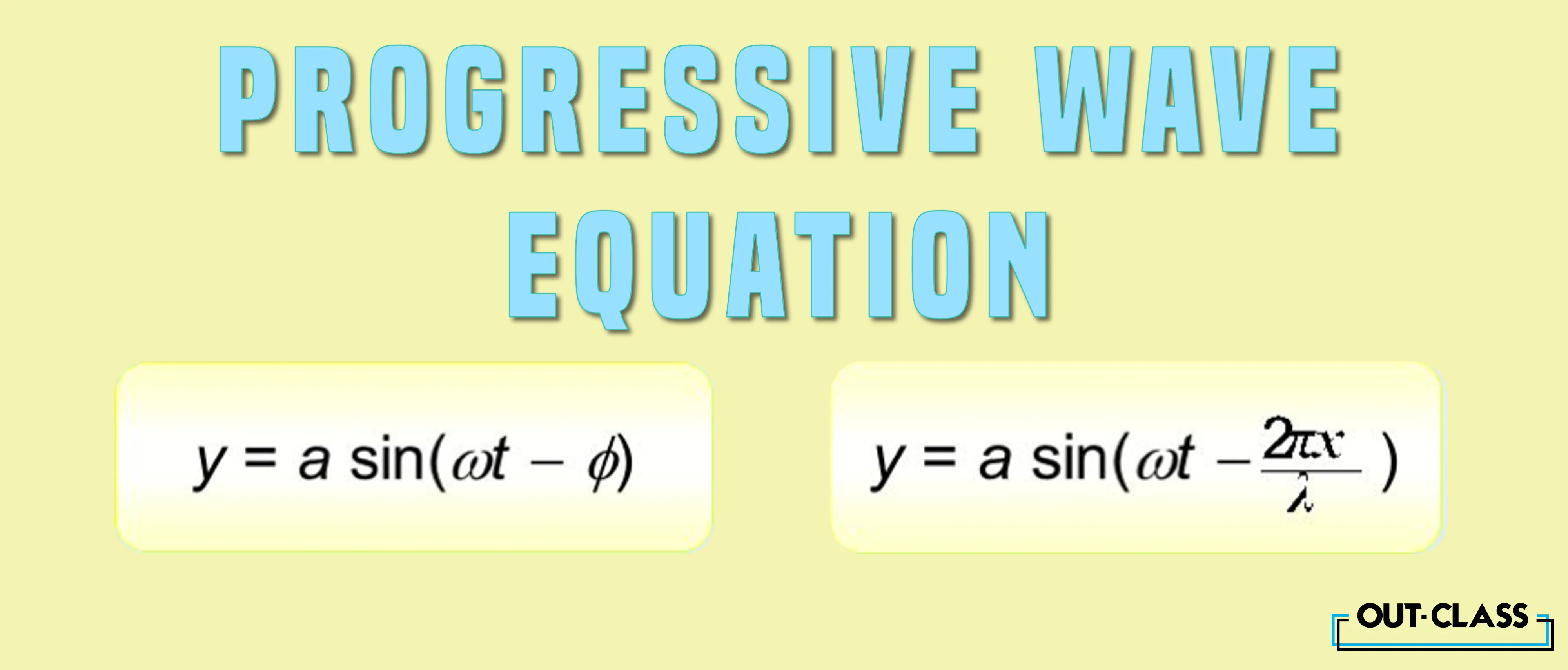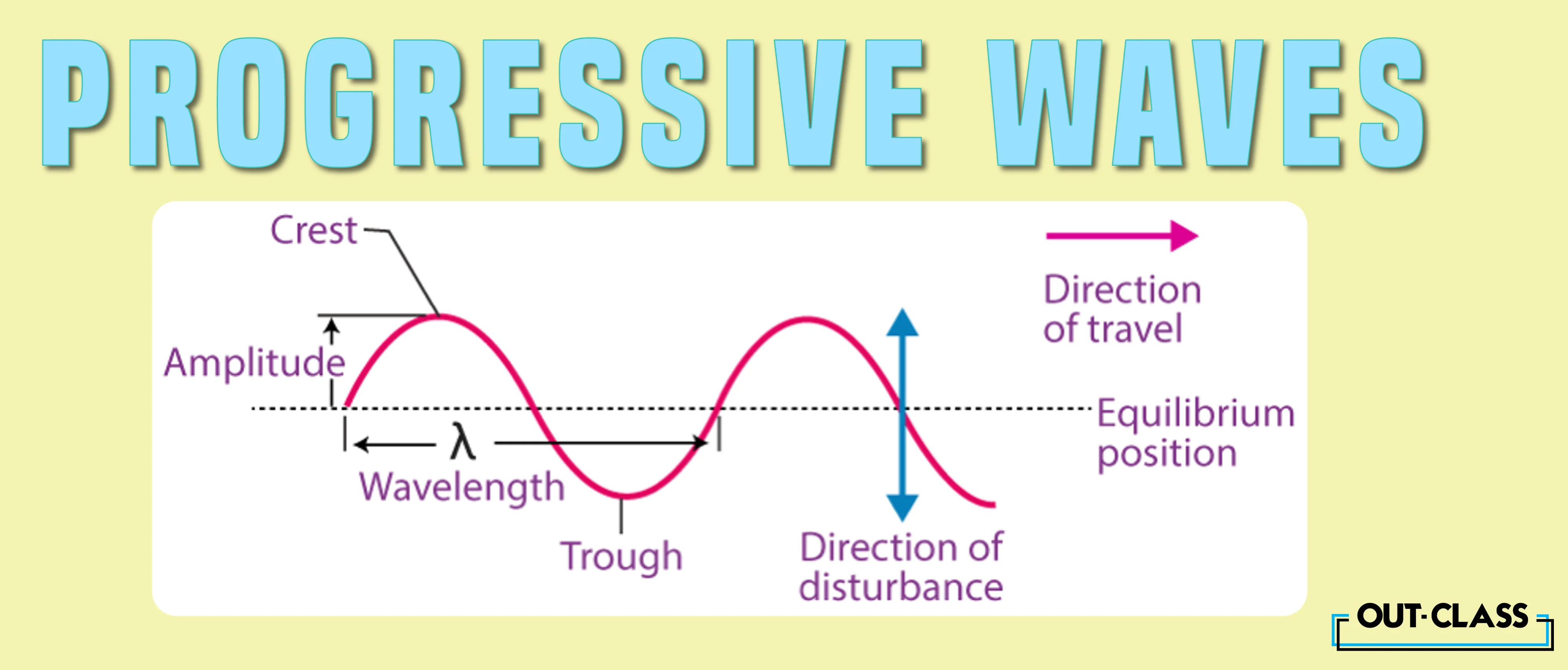Have you ever been curious about the way sound moves through space? Or how light from far-off stars gets to our eyes? Well, the explanation is that these occurrences are instances of progressive waves, as explained in the O Level/IGCSE Physics.
What is a Progressive Wave?
Progressive waves are perturbations that flow across a space or medium without carrying any material.
Progressive Wave Equation
Properties of Progressive Waves
A progressive wave has several properties, such as:
Amplitude
The largest displacement of a wave point from its equilibrium. For instance, the loudness of a sound is correlated with its amplitude.
Wavelength
The separation of two successive wave points with the same phase, such as two crests or troughs. For instance, a light wave's colour is determined by its wavelength.
Frequency
The number of full cycles that pass through a specific spot in a unit of time. For instance, a sound wave's pitch and frequency are connected. The wave's speed is the distance travelled in a given time. For instance, light travels at a speed of roughly 300,000 km/s in a vacuum.
Speed
Speed is the number of complete cycles of the wave that pass a given point per unit time. For example, the sound wave frequency relates to its pitch.
Phase
The angle formed by a point's displacement from its equilibrium position indicates the point's motion on the wave. For instance, two in-phase points on a wave vibrate simultaneously in the same direction, but two out-of-phase points vibrate simultaneously in opposite directions.
Types of Progressive Waves
Depending on how the wave's points vibrate with the wave's motion, there are two forms of progressive waves:
Transverse Waves
Waves that vibrate at places perpendicular to the moving direction are known as transverse waves. Transverse waves include, for instance, water and light waves.
Longitudinal Waves:
Waves that vibrate parallel to the direction of the wave's motion are known as longitudinal waves. Seismic and sound waves, for instance, are longitudinal waves.
Characteristics of Progressive Waves
The principle of superposition, which asserts that when two or more waves meet, the new wave equals the total of the separate waves, is one of the primary properties of progressive waves. It implies that a possibility of both constructive and destructive wave interference exists. When waves combine to produce a greater amplitude, this is known as constructive interference; when waves cancel out, a smaller amplitude is produced.
Progressive waves can also reflect, refract, or diffract when they come into contact with a barrier or obstruction.
When a wave rebounds off a boundary, it changes direction, not speed or frequency. This process is known as reflection. When a wave crosses a barrier, it refracts, changing its direction and speed but not the frequency. When a wave bends around an obstruction, diffraction happens. It spreads out and changes shape, but not speed or frequency.
Examples of Progressive Waves
There are many examples of progressive waves in nature and technology, such as:
Sound waves:
Sound waves are longitudinal waves that move through the air or other medium after being created by vibrating objects. Both our ears and microphones can detect them. Their range of frequencies is from 20 Hz to 20 kHz, and their speed ranges from 1500 m/s in water to 330 m/s in the air.
Light waves:
These transverse waves move across transparent medium or space as a result of luminous objects. Both human eyes and cameras can detect them. Their frequencies span from 4 to 8 x 1014 Hz, and their velocities can reach up to 200,000 km/s in glass and 300,000 km/s in vacuum.
Water waves:
These transverse waves move along the water's surface and exist due to wind or other disturbances. We can observe them with our eyes, and buoys can quantify them. They move at speeds between 0.1 and 100 m/s and at frequencies between 0.01 and 10 Hz.
Radio waves:
These transverse waves are created through electric currents and can move across air or space. Radios and antennas are employed to send and receive them. They travel at the speed of light and have frequencies between 3 kHz to 300 GHz.
Conclusion
In conclusion, progressive waves are disruptions that move through different media without carrying any content. They display characteristics and properties like phase, speed, wavelength, frequency, and amplitude. These waves, separated into longitudinal and transverse varieties, can interfere constructively or destructively.
Progressive waves also exhibit diffraction, reflection, and refraction in the presence of obstacles.
We hope the basics of progressive waves in O Level/IGCSE Physics seem less scary and more fun to you now! But remember, they’re everywhere you see, so the more you try to find them in real life, the easier they become.
FAQs
Q. What is a progressive wave?
A progressive wave is a disturbance that moves through a space or medium without carrying any material.
Q. What are the properties of a progressive wave?
Progressive waves have properties like amplitude (largest displacement), wavelength (distance between two successive wave points with the same phase), frequency (number of cycles passing through a spot in a unit of time), speed (distance travelled per unit of time), and phase (angle indicating a point's motion on the wave).
Q. What are transverse waves?
Transverse waves vibrate at places perpendicular to the direction of the wave's motion. Examples include water and light waves.
Q. What are longitudinal waves?
Longitudinal waves vibrate parallel to the direction of the wave's motion. Examples include seismic and sound waves.
Related: Difference between Transverse and Longitudinal Waves
Q. What is the principle of superposition in progressive waves?
The principle of superposition states that when two or more waves meet, the new wave is the total of the separate waves, leading to both constructive and destructive interference.
Q. How do progressive waves interact with barriers or obstructions?
Progressive waves can reflect, refract, or diffract when encountering barriers. Reflection involves rebounding off a boundary, refraction entails changing direction and speed, and diffraction is the bending of waves around an obstruction.
Q. What are some examples of progressive waves in nature and technology?
Examples include sound waves (longitudinal), light waves (transverse), water waves (transverse), and radio waves (transverse). These waves have different frequencies, velocities, and applications.
Q. How do we detect sound waves, light waves, and water waves?
Sound waves are detected by our ears and microphones, light waves by human eyes and cameras, and water waves by observation or buoys.
Related: What is a Sonometer?





